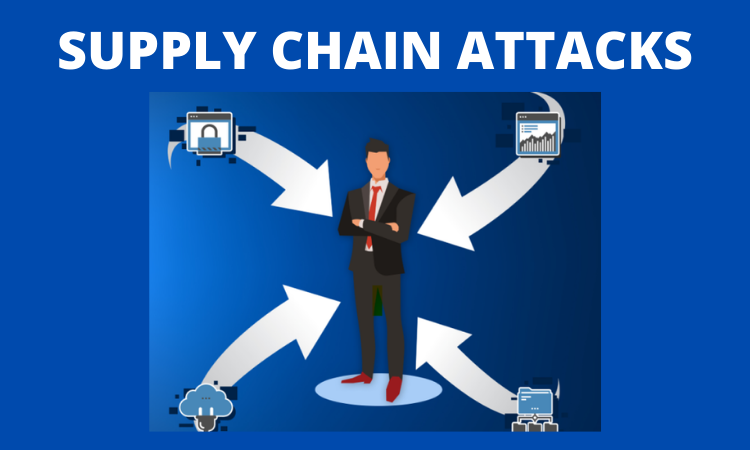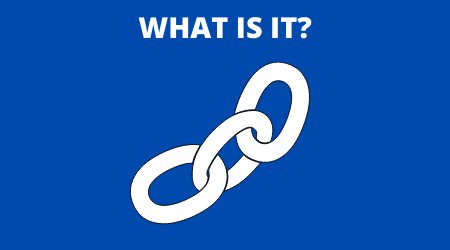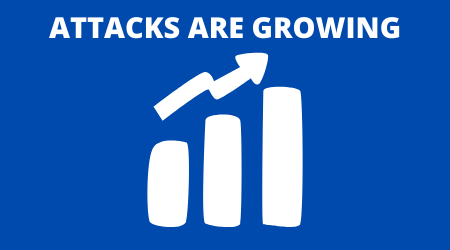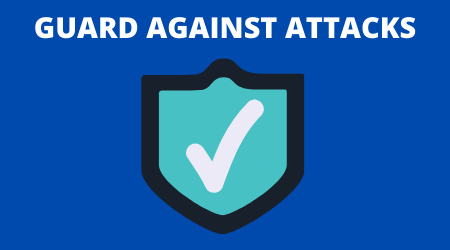DON'T GET YOUR CHAIN JERKED: 5 FACTS TO KNOW ABOUT SUPPLY CHAIN ATTACKS

Supply-chain attacks may not get as much attention as ransomware or data breaches. Still, they are just as damaging to your organization.
This post will explain five things you should know about supply-chain attacks, like what they are, why they happen, and how to prevent them.
You picture everything from raw materials to completed goods when thinking of a supply chain. The procedure might begin with cows and conclude with milk. Refining, manufacturing, packing, and shipping are all part of the supply chain. However, supply-chain attacks in the IT sense involve significantly more than simply tipping those cows in the farmer's field. Bad actors target vulnerabilities where firms connect to one another in these cyberattacks. A supply-chain assault takes advantage of a flaw in the target company's vendor.
In one well-known case, hackers stole 40 million financial records from a traditional American retailer. Target's profits dropped by 46 percent once the news of the hack was publicized. The attacks did not begin with Target. Instead, they utilized credentials obtained from a heating and cooling company.
Any industry can be subjected to a supply-chain attack. In reality, as firms become more networked, the potential for a problem simply becomes worse. Here are the top five things you should know about supply-chain threats to prevent and defend yourself:

1. What is a Supply Chain Attack?
A supply-chain attack is opportunism at its most fundamental. This is also referred to as a value-chain or third-party attack. It happens when someone gains access to a system through a supplier or service provider.
Instead of attacking the firm, the cybercriminal focuses on the weakest link. The attack surface expands as firms become more integrated. Try to locate a company that does not provide network access to a software vendor, payment processor, cloud backup service or does not use installed programs and connected devices today. A flaw in any of them could allow a bad actor to get access to your corporate network.
2. What Makes Supply-Chain Attacks So Dangerous?
For starters, they can occur in any firm. Every company has a supply-chain partner from a vital infrastructure entity to a financial services corporation. The complexity of IT increases the risk of an attack. Many business owners have no idea how the integration works, but they believe it will.
Simultaneously, software developers frequently rely on open-source code components. This is what makes modern application development cost-effective and flexible. However, because code is reused, a vulnerability discovered can be exploited in various ways.
Supply-chain attacks are particularly successful since they take advantage of a valid connection. There are also connected routers, servers, Internet of Things devices, mobile phones, and laptops, in addition to all of the corporate software.
Furthermore, hackers frequently target multiple firms at the same time. Because a supply-chain vendor holds data for more than one client, the strike could result in many victims.

3. Why Are Supply-Chain Attacks Growing?
According to a Symantec report, supply-chain threats grew by 78% in 2018. Why?
In business, it is usual to rely on third-party solutions. However, the digital transformation is changing the way we do business. An integrated supply chain is more productive, efficient, and cost-effective. Furthermore, with digital data, decisions are based on knowledge rather than intuition.
However, cybercriminals do not sit idle. A business process supply chain necessitates more people having access to sensitive data. Shared access provides a potential avenue of attack for the bad guys.
They have a better chance of getting in through a small firm. Running at a high-value target is like using your shoulder to break down a steel door. However, if you can run at a small firm with access to the actual target, it's much more like kicking in a paper door. That smaller business delivers a critical service but lacks the necessary skills and resources to provide an impenetrable defense. The criminal uses this to locate unsecured devices or mine credentials required for an attack.
Still not convinced that supply-chain attacks are a significant issue? United States President Joe Biden issued an Executive Order in May 2021. Supply-chain attacks were covered in one section.
4. How Do Supply-Chain Attacks Happen?
A supply chain can be breached in a variety of ways. The top three methods are as follows:
- exploiting networking vulnerabilities
- utilizing unpatched software
- social engineering.
No one will intentionally let a supply-chain attacker in. Still, small businesses may be hesitant to update software and antivirus protection. As a result, the firm is at greater risk if it lacks up-to-date protection against serious threats.
A company that relies on outdated software or equipment may potentially be exposed. With resources tight and processes running smoothly, the company may be hesitant to upgrade. However, using an operating system after it has reached the end of its life is perilous. The manufacturer no longer provides support or security updates.
Another method of supply-chain attack is the use of malware-infected equipment. This could be a USB drive or another physical device linked to the company's infrastructure. For example, the Stuxnet worm, which infiltrated an Iranian nuclear power plant, arrived on a thumb drive.
Another potential threat is open-source software. Equifax suffered an almost $2 billion loss because of a data breach in 2017. The hackers took advantage of a previously unpatched vulnerability on a consumer complaint portal.

5. How Can You Guard Against Supply-Chain Attacks?
Check out your vendors. There is a lot of inexpensive, convenient software available. Still, you will be better off paying for a well-tested solution. In addition, questionnaires and documentation reviews are now being used by more firms to assess third-party risk.
You can't just assume that your business partners are as committed to securing their network as you are. Inquire with vendors about the security procedures they have in place and how they manage risk. This will demonstrate if they take cybersecurity seriously. You can also determine whether their behaviors are compatible with your own.
Consider compliance. Insist on cybersecurity standards of care from partners. Depending on your sector, you may also adhere to regulatory regulations. Ensure that all participants in the supply chain are compliant and that their security posture is tested.
Restrict access. When you build an agreement with a third party, make careful to restrict their access. Use the least-privilege strategy. This means that the vendor can only access pre-determined sites or systems. This aids in the prohibition of software communicating with malicious command and control servers. Set up notifications for third-party credentials that are used to perform something unusual.
Know your inventory, not the inventory on your warehouse shelves, but the inventory of network-connected devices. Conduct an audit to obtain a comprehensive list of all open-source and other software, hardware, and systems forms. Once you have this, you should replace or discontinue the use of any outdated systems, services, or protocols.
Unapproved IT should be removed. For example, you instruct your staff not to install unapproved apps on your IT infrastructure, but they insist on using specific software. Or it simplifies their lives, so they do it anyway. Remove any unauthorized IT, often known as shadow IT, as it puts your company at risk.
Patches should be deployed. Patch management and software update mechanisms must be in place in your organization. Don't disregard the notification to install the most recent version of a system to catch up on the next one. You could be passing on an opportunity to close a gap discovered and repaired by the manufacturer.
Keep track of potential flaws. According to IBM, third-party vulnerabilities will be responsible for 16% of all data breaches in 2020. These attacks are a deceptive method of accomplishing a task. Follow industry news and keep an eye out for cybersecurity alerts from industry and government authorities. Your company must ensure that it is aware of the dangers and does everything possible to mitigate them.
Support Against Supply-Chain Attacks
Supply-chain attacks are a complex problem to solve. Don't be concerned. Your company does not have to do it alone. IT professionals can help you conquer your to-do list and protect your systems from supply-chain hazards.
Complacency is not the solution. A supply-chain attack could devastate any industry or type of organization. Take preemptive measures to avoid the worst-case scenario.
Start with reviewing your IT policies and processes today.

GET IN EARLY!
https://twitter.com/ItsmRhino/status/1471911594783576064
The rewards earned on this comment will go directly to the person sharing the post on Twitter as long as they are registered with @poshtoken. Sign up at https://hiveposh.com.
Congratulations @joerhino! You have completed the following achievement on the Hive blockchain and have been rewarded with new badge(s):
Your next target is to reach 4250 upvotes.
You can view your badges on your board and compare yourself to others in the Ranking
If you no longer want to receive notifications, reply to this comment with the word
STOPThanks. No problem!
You're welcome @joerhino, that's well deserved 😊👍 Have a nice day!
Your welcome and thank you for the badge.
We didn’t meet before but thank you for the delegation and do come to the terminal if you have discord. I wish you happy holidays and see you on hive
I think @theterminal account welcomed me at some point. I've ran across you @brittandjosie on other posts when looking at comments or leaving my own on other's posts, like @ryzeonline or @cynshineonline and some others. About time I follow the loving wife, mother of 4, and lover of life 😀.
I need that type of positivity in my life!
That’s sweet thank you and yes positive vibes are needed in these difficult times both online and in real life
Have a Happy Holiday season!
@brittandjosie is a light on the chain, and the terminal has helped so many, great to see you and her together on this thread. :)
Also, I love that you have a holistic view and realize the importance of supply chains and taking care of every 'supplier' in our networks. 🙏
Yes, I hope to engage with @brittandjosie much more in the future. I have already came across one of her other projects, @heyhaveyamet. It is slicker than cat shit on linoleum😀. Makes meeting and greeting new people to Hive so much easier.
Not sure about taking care of them, but just being aware of how our suppliers, partners, etc. are a part of an overall cybersecurity chain and that we are only as strong as our weakest link.
Many IT policies still fail to address this and will continue to do so because of short-sightedness and siloed thinking.
Thanks Jay for stopping by, reading, and commenting my friend. Your awesome!
(grin) Totally agreed.
And, call it whatever you want, devoting any amount of attention to one's supply chain, cyber or otherwise, is 'caring' in my book. (As opposed to 'not caring') :D Either way, regardless of chosen language, I believe we're on a similar page here.
You're right many do fail to address this, but I hope some learn from your post. Thanks for writing bro, you're awesome too! #KeepRyzing ! 🙏
This is interesting. The first time I will be hearing about supply chain attacks. So, it is not just enough to safeguard only your end but those connected to your business without whom your production might be disrupted.
You got it!
You need to ask lots of tough questions of your vendors and partners. Definitely need to ensure it is addressed in your IT policy and processes for sure.
Thanks for your contribution to the STEMsocial community. Feel free to join us on discord to get to know the rest of us!
Please consider delegating to the @stemsocial account (80% of the curation rewards are returned).
Thanks for including @stemsocial as a beneficiary, which gives you stronger support.
Akready done.
Your content has been voted as a part of Encouragement program. Keep up the good work!
Use Ecency daily to boost your growth on platform!
Support Ecency
Vote for new Proposal
Delegate HP and earn more
Thank you.
I never connected a supply-chain attack with the weakest-link analogy that we all know. Now it's so much easier to understand and more memorable!
Thanks for stopping by, reading, and commenting. Glad it resonates and helps you understand.